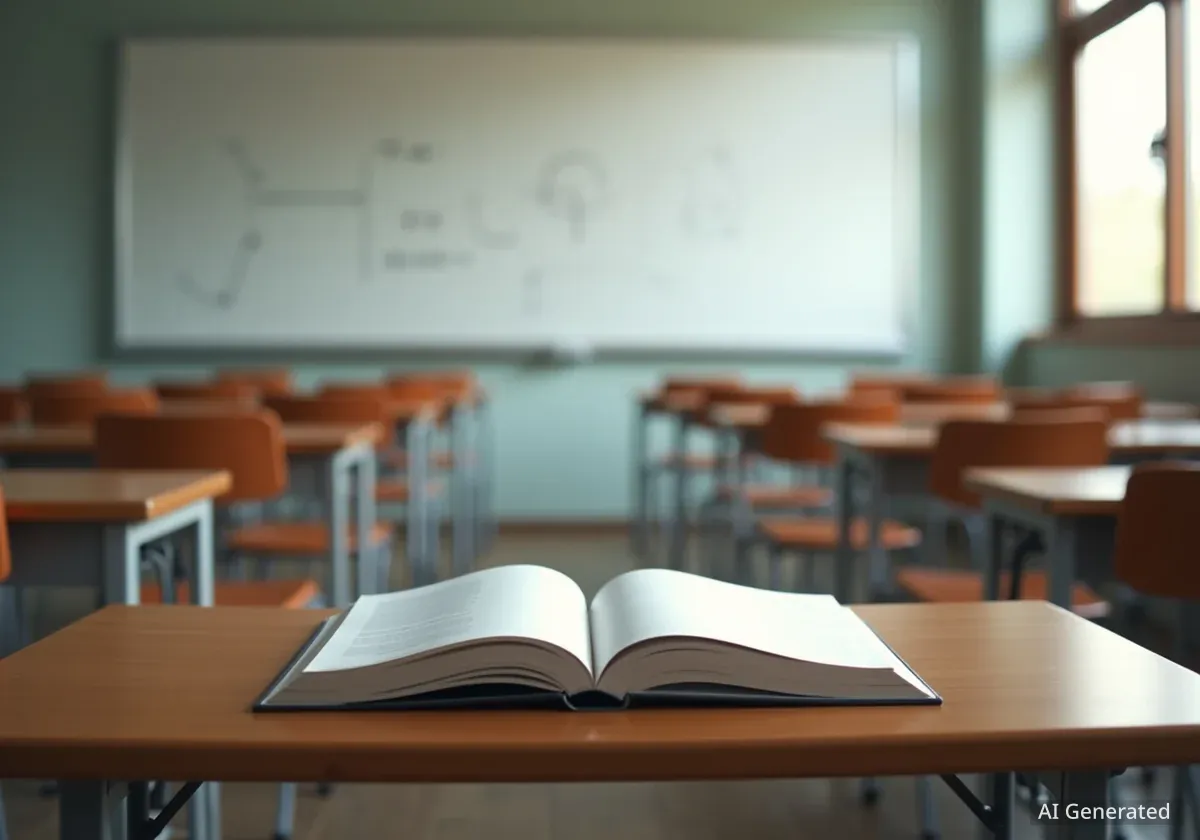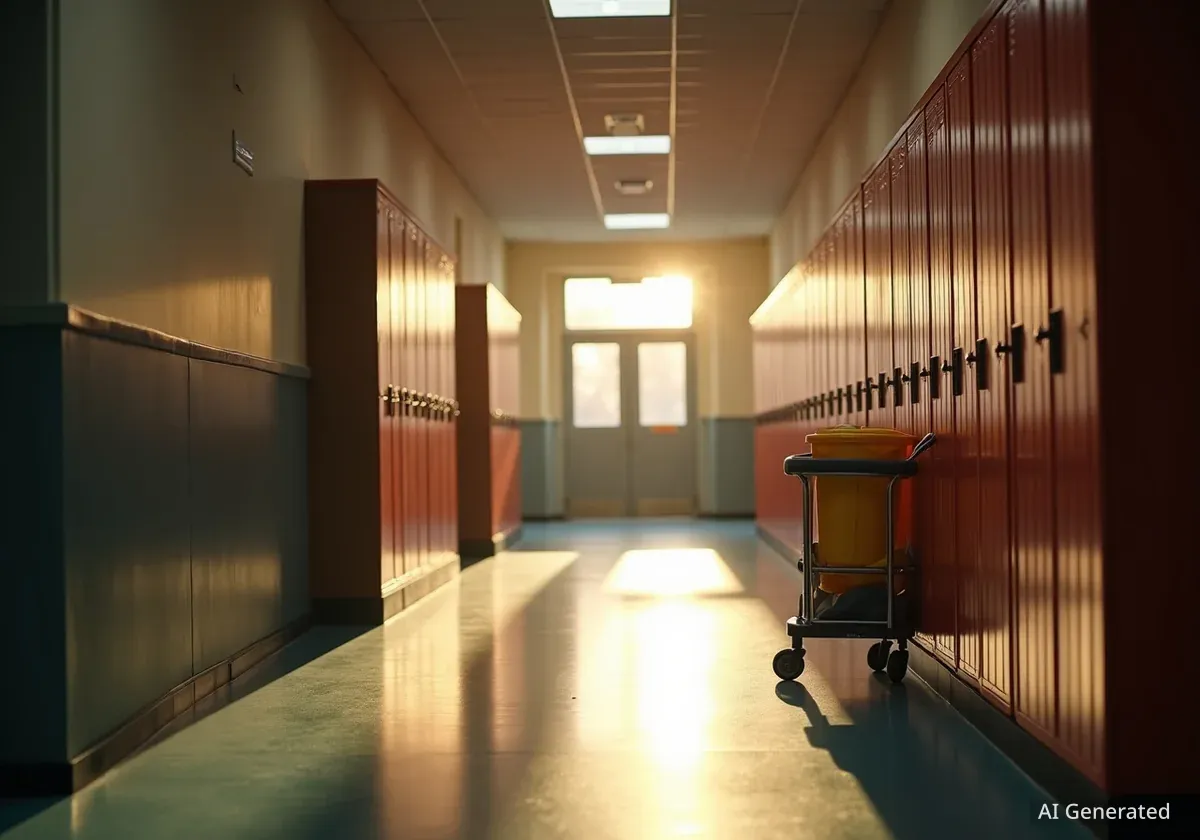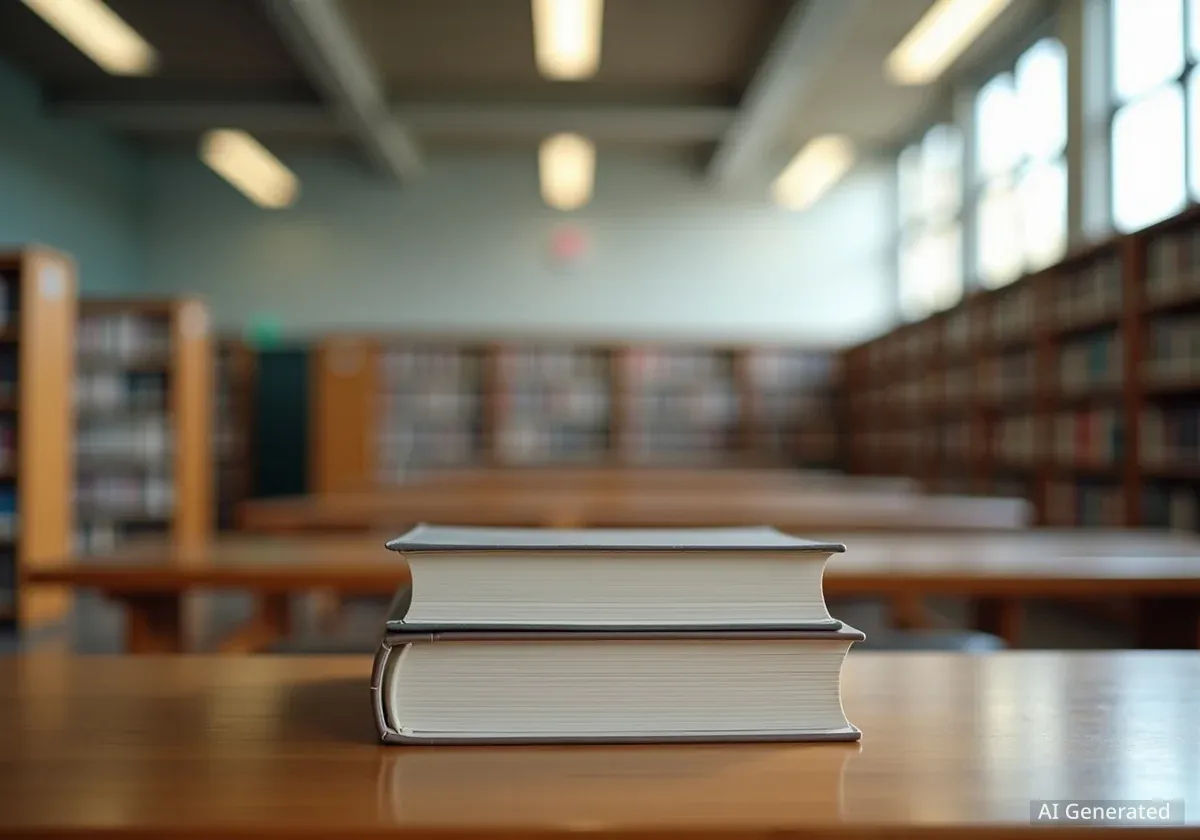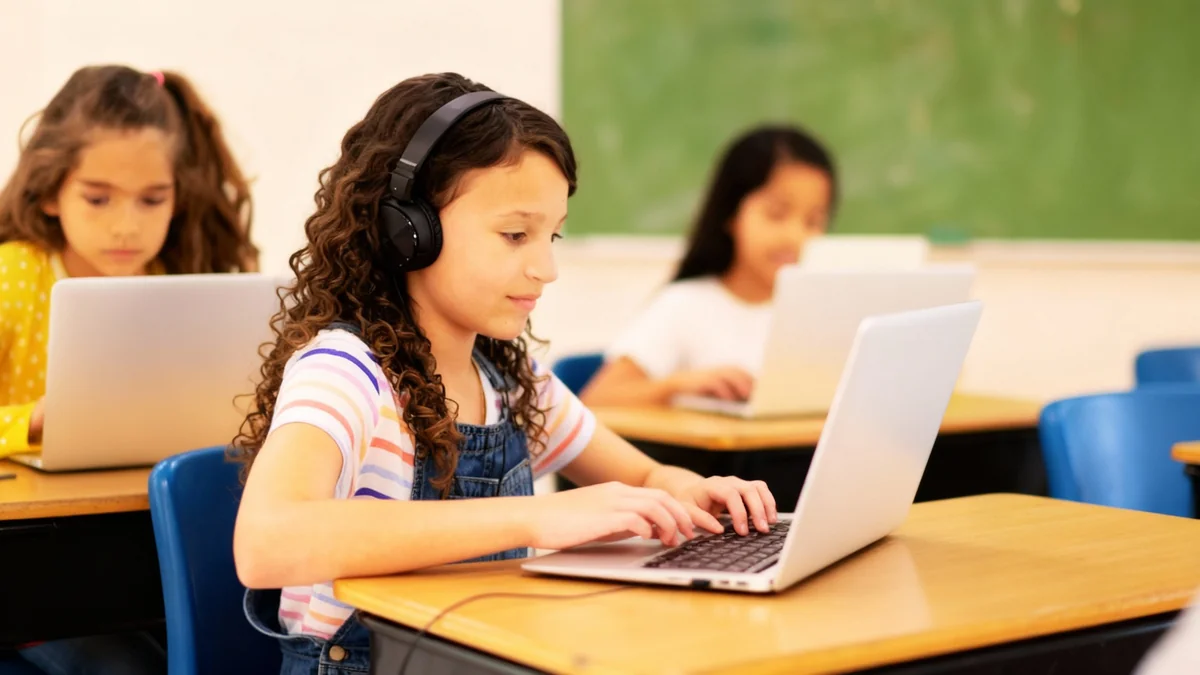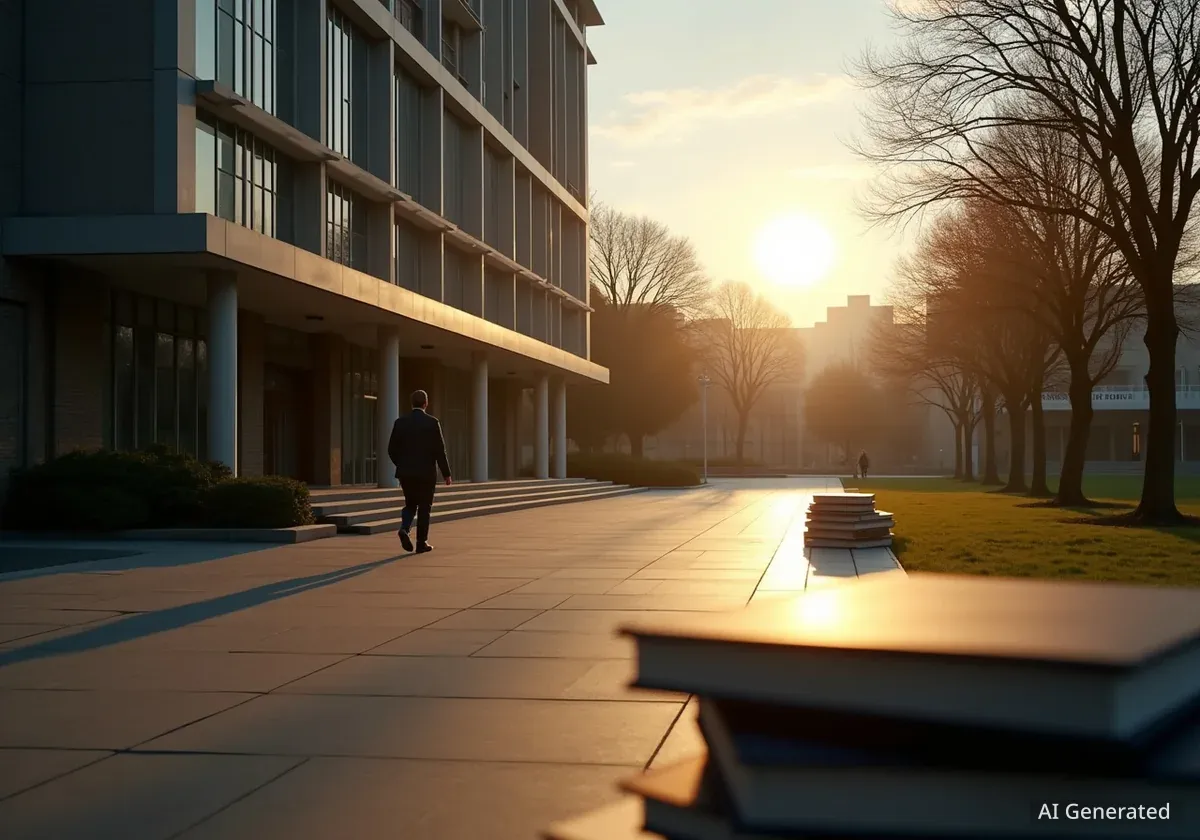A recent study of a Florida school district that implemented a strict cellphone ban reveals a significant improvement in student test scores, but not before an initial period of heightened disciplinary issues. The findings offer a detailed look at the trade-offs schools may face when removing personal devices from the classroom, showing a path from short-term disruption to long-term academic benefit.
The research, published by the National Bureau of Economic Research, tracked the district over two years. While the first year saw a sharp increase in suspensions as the new rule was enforced, the second year showed a return to normal discipline levels alongside measurable gains in student performance, particularly for middle and high school students.
Key Takeaways
- A Florida school district's cellphone ban resulted in a 2-3 percentile increase in student test scores in the policy's second year.
- The first year of the ban saw a significant spike in disciplinary actions, with suspension rates more than doubling in the first month of enforcement.
- By the second year, suspension rates returned to pre-ban levels, and unexcused absences also declined.
- The findings contribute to a growing national conversation, with 20 states and territories now prohibiting phones during the school day.
A Rocky Transition to a Quieter Classroom
When the Florida school district first introduced its cellphone ban, the immediate effect was not on grades, but on discipline. Enforcing the new rule proved challenging, leading to a notable increase in student infractions. The transition period was marked by a surge in disciplinary referrals directly related to cellphone use.
According to the study's researchers, the consequences were clear and immediate. They noted that the suspension rate more than doubled in the month right after enforcement began compared to the month prior. This rate was also 25 percent higher than the same month in the school year before the ban was in place.
These elevated suspension rates continued throughout the first academic year of the policy. This initial phase highlights the significant administrative and behavioral hurdles schools can expect when implementing such a widespread change. It required a consistent effort from staff to enforce the rules and manage the resulting disciplinary actions.
The Data on Discipline
The numbers from the first year paint a stark picture of the adjustment period. The jump in suspensions was not a minor fluctuation but a substantial shift in the school's disciplinary landscape.
"Suspension rate more than doubled in the month after disciplinary enforcement started compared to the month before and was 25 percent higher compared to the same month in the school year right before the ban," the researchers wrote.
This period of adjustment, while difficult, appears to have been a necessary step. It established a new baseline for classroom expectations where personal devices were no longer a source of distraction. The study suggests that this initial enforcement struggle was critical to achieving the academic benefits that followed.
The Academic Payoff in Year Two
After the turbulent first year, the second year of the cellphone ban brought a dramatic shift. Disciplinary incidents related to phone use subsided, and suspension rates returned to the levels seen before the policy was implemented. With the new norm established, the academic benefits began to emerge.
The study found that student test scores rose by approximately 2 to 3 percentiles in the second year compared to the year before the ban. This improvement suggests that once the distractions were removed and the behavioral adjustments were made, students were better able to focus and learn.
Focus and Performance
The study noted that the academic improvements were most pronounced among middle and high school students, who are typically more likely to own and use cellphones during the school day. The effect was less noticeable in elementary schools, where phone ownership is lower.
In addition to better test scores, researchers also observed a decline in unexcused absences. This suggests the policy may have contributed to a more engaged student body. Fewer distractions in the classroom and a more structured learning environment could have played a role in improving both attendance and academic performance.
The researchers explained the sequence of events clearly.
"Interestingly, we observe significantly improved student test scores in the second year of the ban (about 2-3 percentiles higher than the year before the ban) when suspensions revert to pre-ban levels."
This timeline indicates that the benefits of a phone-free environment may not be immediate. Schools and parents may need to remain patient through an initial adjustment period before the positive academic outcomes become apparent.
A National Trend Toward Phone-Free Schools
The findings from this Florida district are part of a much larger national conversation about the role of technology in education. Across the United States, states and individual school districts are grappling with how to manage the constant presence of smartphones, smartwatches, and other personal devices.
State-Level Policies Vary
An analysis shows a patchwork of policies across the country. Currently, 20 states and territories, including Washington, D.C., have implemented statewide bans on cellphones during school hours. However, 17 states leave the decision entirely up to local districts, while 16 others have adopted more flexible approaches, sometimes requiring districts to create their own policies.
Concerns about student mental health, cyberbullying, and classroom distraction are driving many of these policy changes. Districts are increasingly looking for ways to create learning environments where students can focus on their studies and engage with their peers and teachers without the interruption of notifications and social media.
For example, New York City recently expanded its school cellphone ban to include smartwatches, demonstrating a growing recognition that any connected device can be a source of distraction. As more schools consider similar policies, the Florida study provides a valuable case study.
Looking Ahead: Correlation vs. Causation
While the results are compelling, the study's authors advise caution. Their research focused on a single school district, and the results may not be universally applicable to schools in different demographic or geographic settings. They also emphasize that their findings show a strong correlation between the ban and improved scores, but do not definitively prove direct causation.
Despite these limitations, the study offers a practical roadmap for school administrators. It suggests that while implementing a cellphone ban can cause short-term challenges, these can be managed. With clear communication and consistent enforcement, schools may be able to navigate the initial disruption to foster a more focused and academically successful environment for students in the long run.
